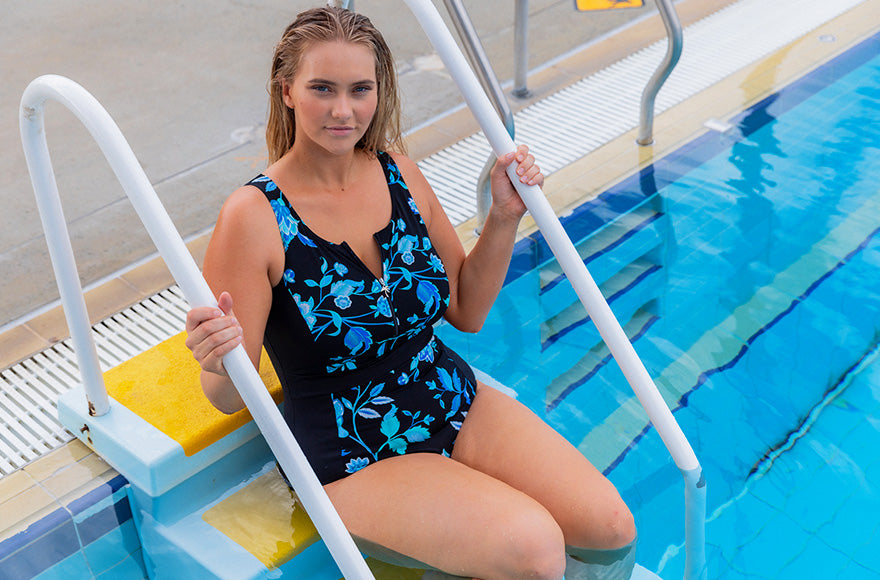How to keep your swimwear looking great for longer
Good swimsuits can be hard to find, and even harder to take care of if you’re unsure of the best method. The sun, chlorine and chemicals can all damage and degrade your swimwear, so it’s important to take the time to care and clean them properly.
Here are some helpful tips on how to make your swimwear last:
How to wash your swimsuit
It’s important to wash your swimwear after every single wear, even if you didn’t get it wet. Sunscreens, fake tans and our own sweat and body oils have particular chemicals in them that react negatively to the elastic fibres in swimwear, causing the material to break down quickly.
Make sure when you use sunscreen and fake tans that they are completely dry before you put on a swimsuit. Wet your swimsuit with clean water before you go for a swim. This makes it less likely that your swimsuit will soak up as much chlorinated water.
We recommend washing your swimsuit by hand, in cold water and a mild, delicate detergent. The reason why you shouldn’t wash your swimwear in a washing machine is that it can be really harsh (even on a delicate cycle) and can destroy your swimsuit.
It’s really important to rinse your swimwear as soon as you get out of the pool or ocean. You should also not put your swimsuit in the dryer, as the heat will wear down the fabric over time. Instead, leave it to drip dry in the shade, laying the swimwear flat (not hanging up by the straps). Don’t wring it out or leave it rolled up wet.
Black Honey Comb Boyleg One Piece
Keep them away from heat
As mentioned above, heat can do serious damage to your swimsuit. Don’t wash your swimsuit in warm or hot water, as this can cause colour fading and fabric tearing. We also recommend not wearing your favourite or best swimsuit in the hot tub, instead wearing one that you wouldn’t mind getting a little damaged.
The extreme heat and chemicals in a hot tub will damage and stretch your swimwear very quickly. It’s also important never to iron your swimsuit, the fabric is not made to withstand the heat and it will definitely destroy it.
Plain Black Underwire Bikini Top and High Waisted Pant
What about light coloured and white swimwear?
White swimsuits are gorgeous, but are known for turning yellow and getting dirty. After wearing light coloured or white swimwear, hand wash it as soon as you can. The reason they turn yellow is damage from chlorinated water, that wears down the fibres of your swimsuit over time.
If your white swimsuit does appear to be turning yellow, don’t use bleach to fix it. It’s recommended to soak it in a solution of half a cup of baking soda dissolved in approximately seven and a half litres of water. Leave it soaking for a couple of hours, then rinse well with cold water and air dry.

Provence Blue Lace Up One Piece
Try chlorine resistant swimwear
Chlorine resistant swimwear is great if you plan on spending a lot of time in chlorinated water. Exposure to lots of chlorine will damage the fabric of a swimsuit over time so chlorine resistant swimwear is usually made from 100% polyester fabric rather than regular swimwear fabric. This means the swimwear is less likely to lose its colour and shape as quickly. While chlorine resistant swimwear is designed to be long-lasting and durable, they still need proper care.

Corsica Turquoise Chlorine Resistant Zip Front Sleeveless One Piece
If you're looking for more swimwear tips, check out our blog post Finding the Perfect One Piece Swimwear!














